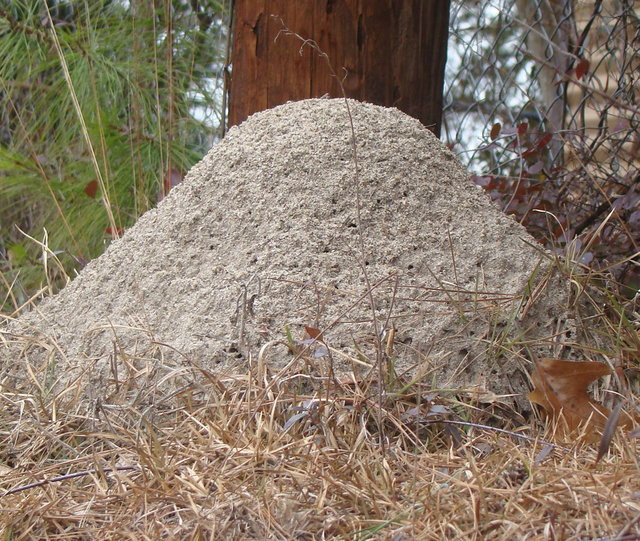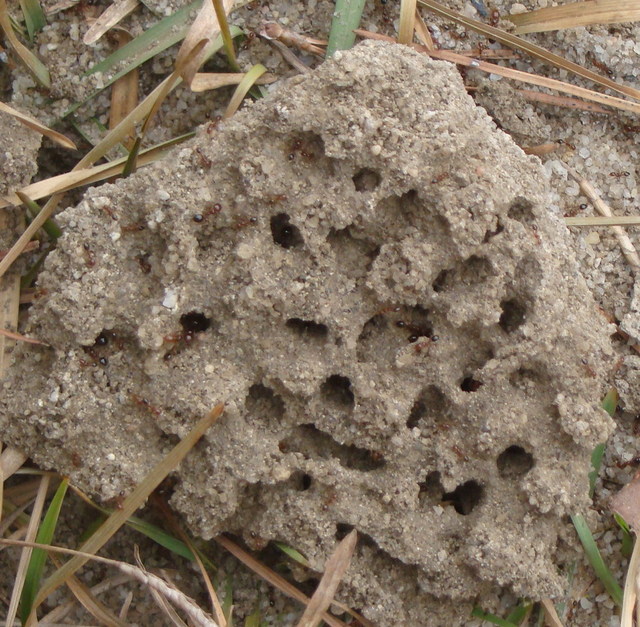There are about 10,000 known species of ants, but one — the Solenopsis invicta — is making its presence known more and more in North Carolina.
Also known as the red imported fire ant and by some simply as the “devil’s minions,” it has made North Carolina home since about 1952. Since then, it has been found in 71 of the state’s 100 counties.
“They are very common around here now,” said Dana McDuffie, owner of McDuffie’s Pest Control in Elizabethtown. “{They don’t go dormant, and the number of fire ants is getting bigger every year.”
The tiny but pesky ants usually swarm in June and July when the weather gets warmer, but their mounds are quite evident even now — especially along Hwy. 87 in Elizabethtown and Dublin.
Part of the reason for the fire ants’ moving further into North Carolina is a result of recent mild winters. But more recently it is due to increased residential and industrial development and subsequent introductions of fire ants in infested sod and nursery stock.
“Fire ants really like the heat, and their mounds act as a sun dome,” McDuffie said. “In the summer, those mounds are relatively flat because the ground is so warm. But right now, they are pretty high in an effort to absorb as much warmth as possible.”
She added that fire ants rarely build their colonies side to side, even if several mounds appear close to each other, preferring instead to build up and down. And those mounds can reach a couple of feet above ground.
“A mound can actually go several feet deep into the ground, depending on the water table and weather at the time,” McDuffie said. “And each mound used to have only a single queen. Now there may be multiple queens.”
Fire ants will also seek out warmth under asphalt and even make their home in air-conditioning units, eventually packing them with thousands of ants until the unit is unable to operate. They have also been known to enter homes and buildings in search of warmth and moisture.
Red imported fire ants are extremely resilient and have adapted to contend with both flooding and drought conditions. If the ants sense increased water levels in their nests, they will come together and form a huge ball or raft that is able to float on the water, with the workers on the outside and the queen inside. Once the ball hits a tree or other stationary object, the ants swarm onto it and wait for the water levels to recede.
To contend with drought conditions, their nest structure includes a network of underground foraging tunnels that extends down to the water table. Also, despite the fact that they do not hibernate during the winter, colonies can survive cold conditions as low as 16 degrees. Occasionally they feed on vegetable plants in home gardens. The worst damage usually occurs during hot, dry weather when they invade flowerbeds while seeking warmth and moisture.
McDuffie said each mound contains hundreds of thousands of fire ants, most of them the “worker ants” who build the tunnels within the mound and forage for food outside the mound.
“Because they are so resilient, it’s not easy getting rid of them,” McDuffie said.
Baiting the area with a granular fire-ant bait when the temperature is between 50 and 80 degrees is best, and bait should not be put on the mound but within 3 or 4 feet of the mound. McDuffie said a good bait will take up to a week to kill the fire ants.
“Worker ants don’t eat the bait — they carry it back to the colony for the queen and larvae,” she said. “My father (Walter) always said that the larvae is the stomach of the colony.
“You don’t want something that will kill the worker ants too quickly, because they will stop carrying the bait back to the colony,” she added.
Anyone wanting information about the best ways to eradicate fire ants can call McDuffie Pest Control at 910-862-3635.
W. Curt Vincent can be reached by calling 910-862-4163.



